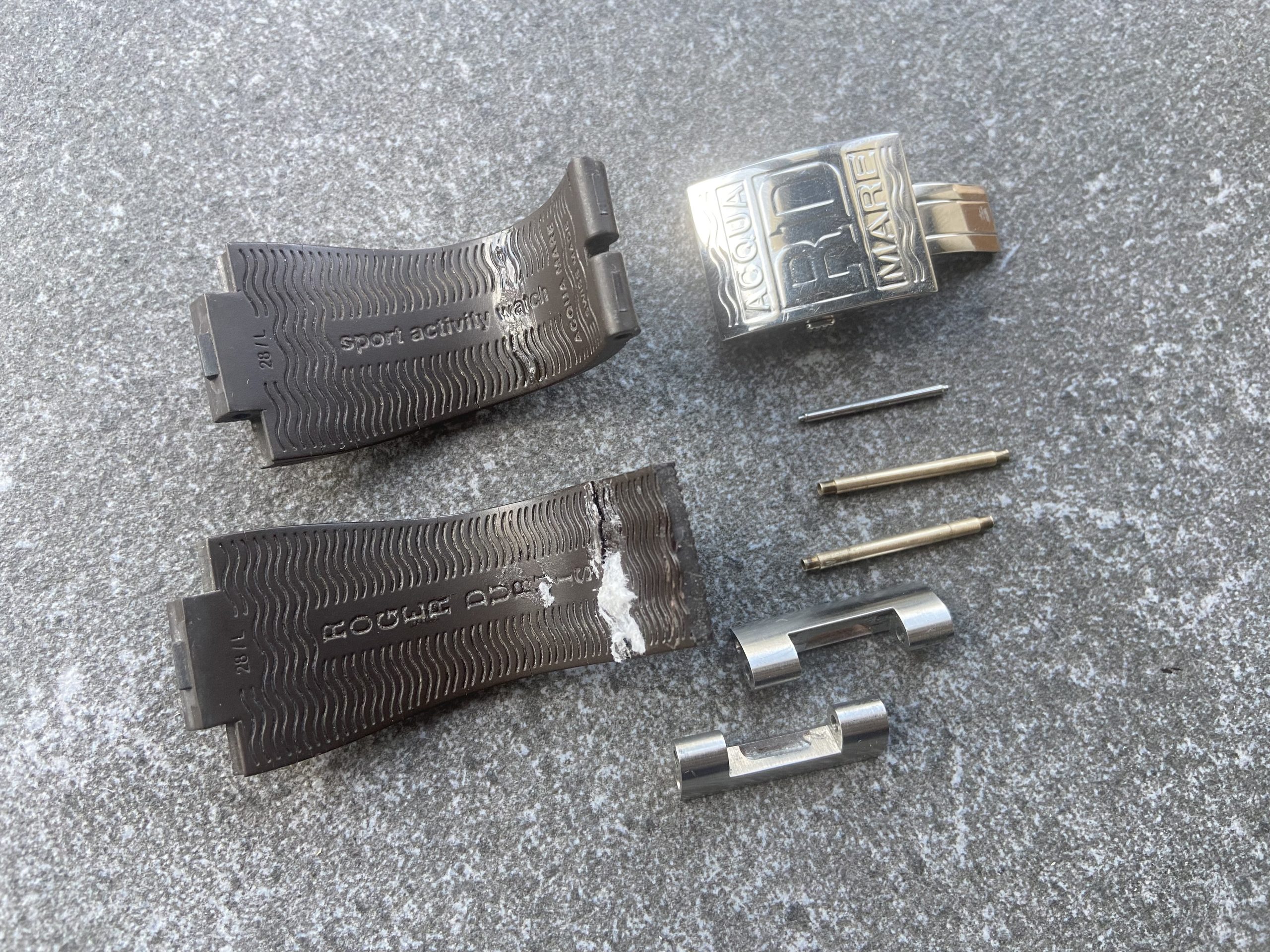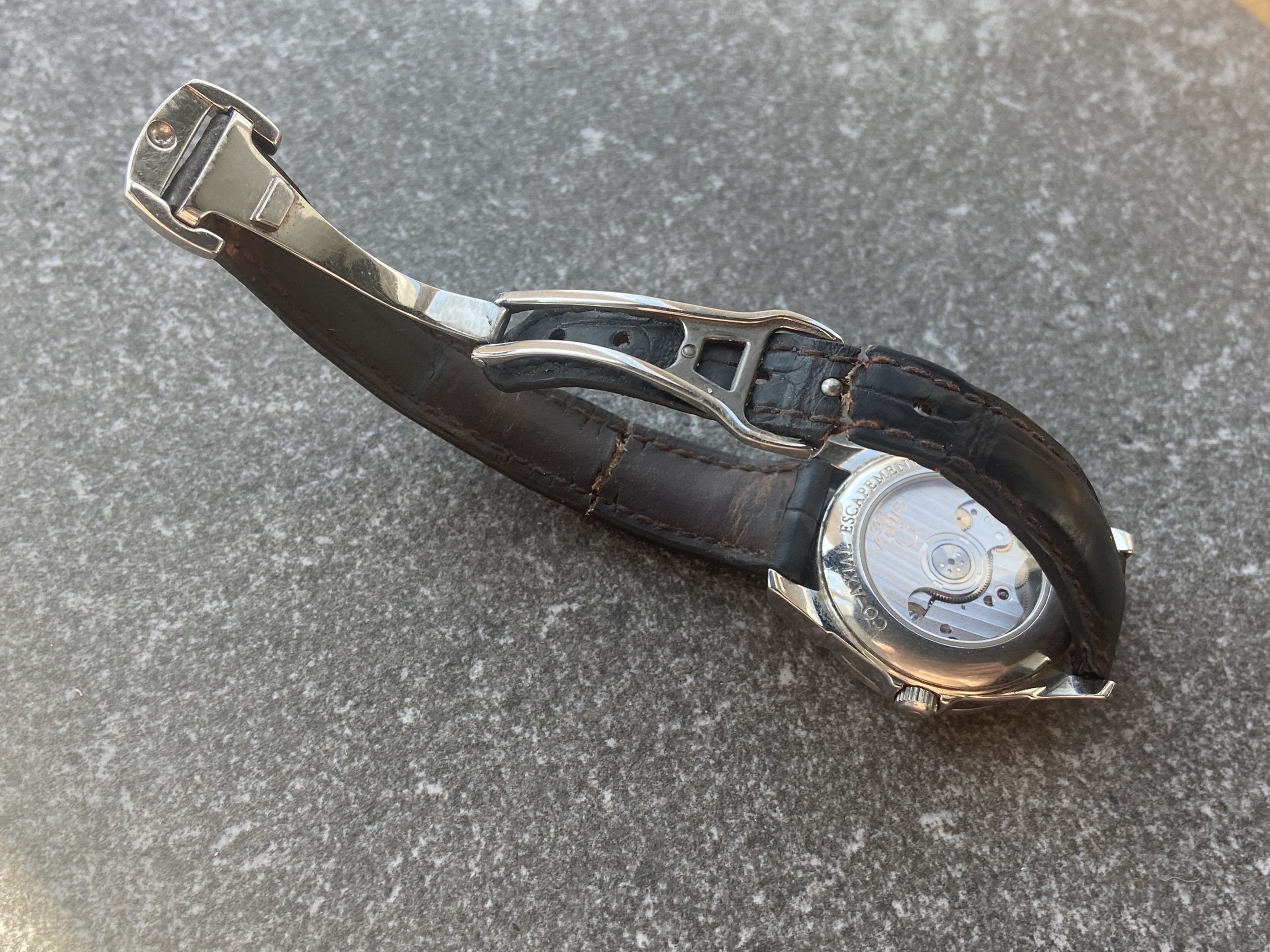Introduction
Watch straps play a crucial role not only in the aesthetic aspect but also in the practical use of watches. Understanding their service life helps make the right choice when purchasing and ensures the longevity of the accessory.
Metal Bracelets
Metal bracelets are often chosen for their durability and elegant appearance. Stainless steel and titanium are the most common materials. Stainless steel is highly resistant to corrosion and mechanical damage, making it an ideal choice for everyday use. Titanium bracelets, on the other hand, are lightweight and strong but require more delicate handling due to their higher cost. To extend the service life of metal bracelets, it is recommended to regularly clean and check the condition of clasps and links. Estimated service life: up to several decades with proper care.
Silicone and Rubber Straps
Silicone and rubber straps are highly resistant to water and comfortable to wear. However, they are prone to fading and wear when exposed to direct sunlight. Additionally, these materials can absorb sweat, which can lead to an unpleasant odor and requires regular washing. It is recommended to avoid contact with chemicals and strong cleaning agents to prevent cracks and deformation of the material. Estimated service life: one to three years, depending on the level of care and usage.
Leather Straps
Leather straps embody classic style and elegance. Depending on the type of leather (calfskin, exotic, etc.), they can be soft and flexible or more durable and rigid. However, leather is susceptible to moisture and sweat, which can lead to loss of shape and cracking. To care for leather straps, it is recommended to avoid contact with water and use specialized care products to maintain softness and prevent cracking. Estimated service life: one to two years, with regular care and avoidance of moisture.
To learn more about the factors affecting the durability of leather straps and ways to extend their lifespan, read our detailed article here.
Why Do Manufacturers Not Specify a Concrete Service Life?
- Individual Usage Conditions: The service life can vary greatly depending on how actively the strap is used, storage conditions, and care. This makes it difficult to provide a definitive warranty period.
- Impact of External Factors: How materials react to environmental factors (moisture, sunlight, chemicals) can vary significantly under different climatic and operational conditions.
- Standards and Recommendations: Instead of a specific period, manufacturers often provide care and maintenance recommendations, which help extend the service life but do not commit to specific warranty promises.
- Focus on Style and Quality: Manufacturers often emphasize design, material quality, and the overall impression of the product, assuming that owners will evaluate and care for the straps based on their preferences.
- Testing and Standardization Complexity: Determining the exact service life of watch straps requires extensive testing and standardization, which can be challenging due to the variety of materials and usage conditions.
- Legal Considerations: Specifying a concrete service life could create legal obligations for manufacturers, especially in the context of warranty service. Avoiding a clear definition of service life helps prevent potential claims and disputes with consumers.
Conclusion
Choosing the right watch strap depends on the lifestyle and preferences of the watch owner. It is important to consider the material and level of care to ensure longevity and maintain the accessory’s appearance for many years.


